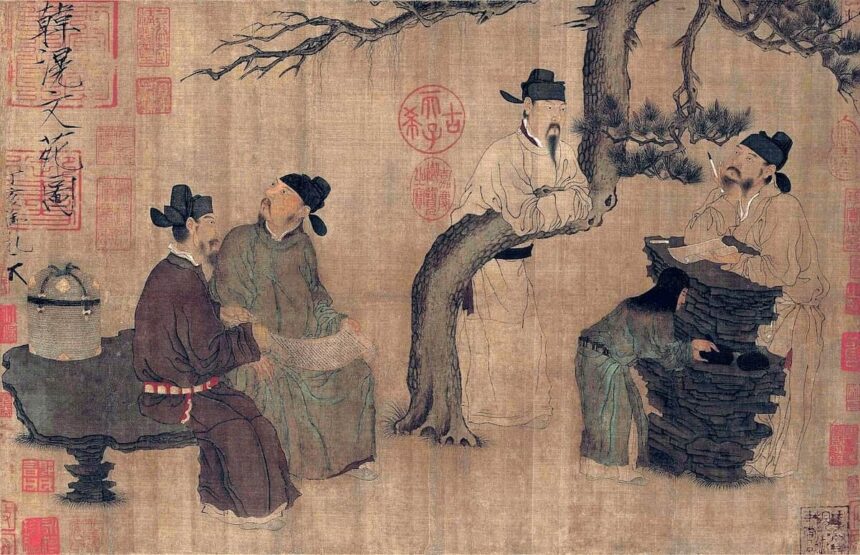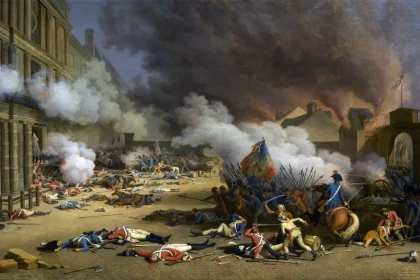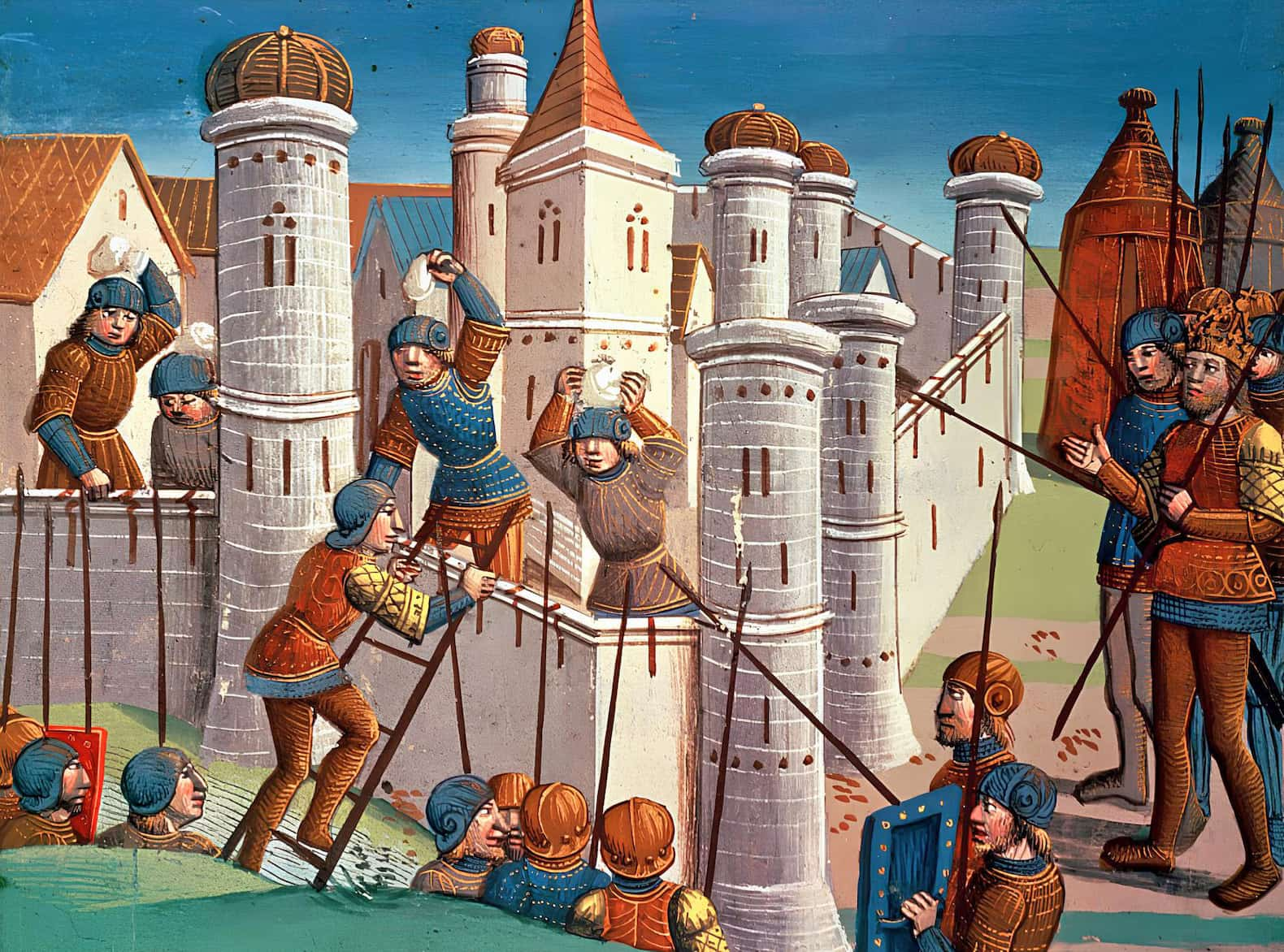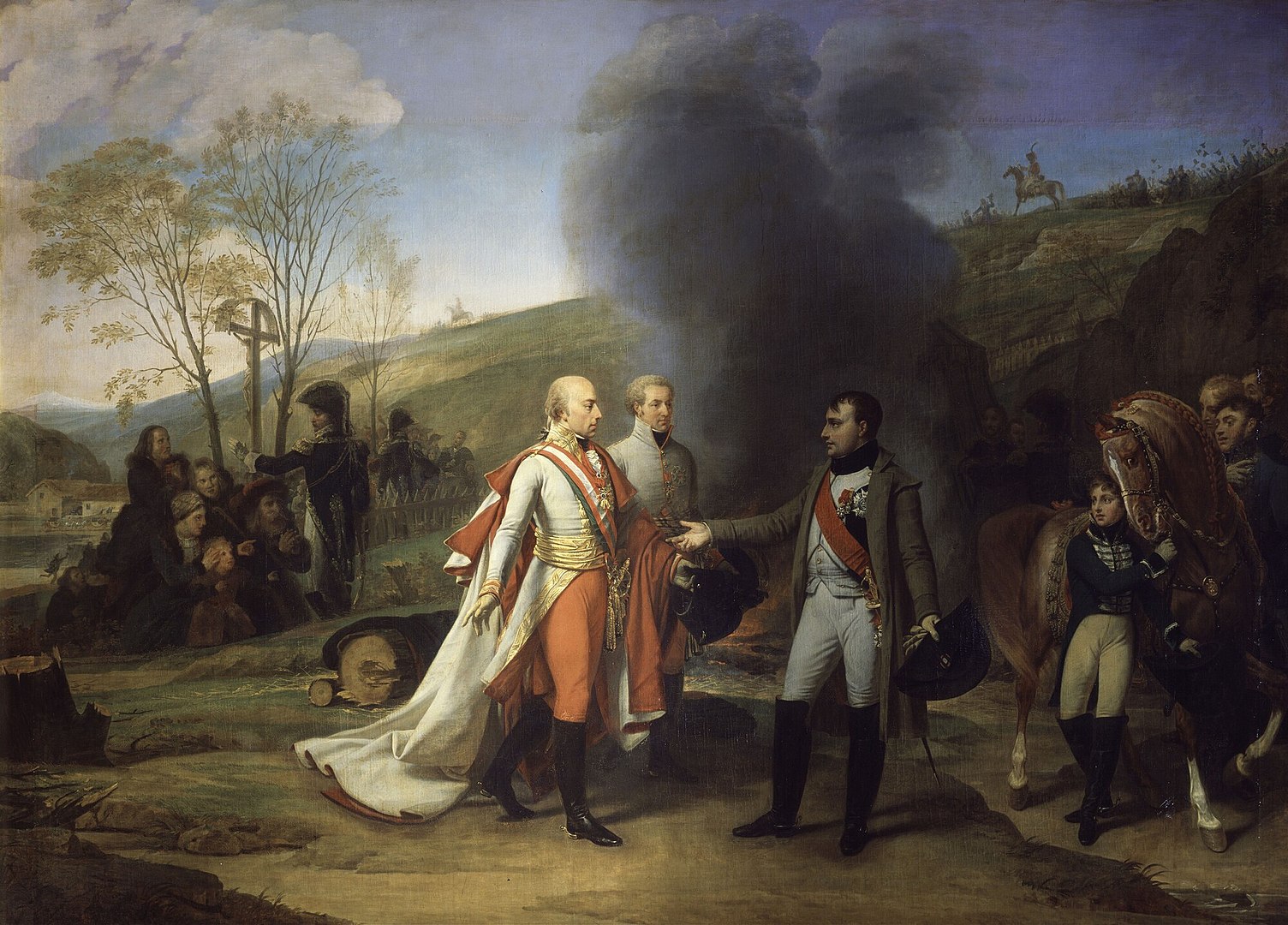The Song Dynasty began in 960 CE, following several decades of political chaos in China. China was divided and in the midst of civil war, with each faction trying to recreate the Empire and take control. The commander-in-chief of the Later Zhou dynasty armies (one of the Ten Kingdoms of Southern China), Commander Zhao Hongyin, led an uprising and deposed the previous emperor before taking the name Emperor Taizu and founding the Song dynasty. From the beginning of his reign in 960 until his death sixteen years later, he conquered all other kingdoms except for the Northern Han, reunifying China under a single authority.
Thus began the Northern Song dynasty.
The Northern Song Dynasty
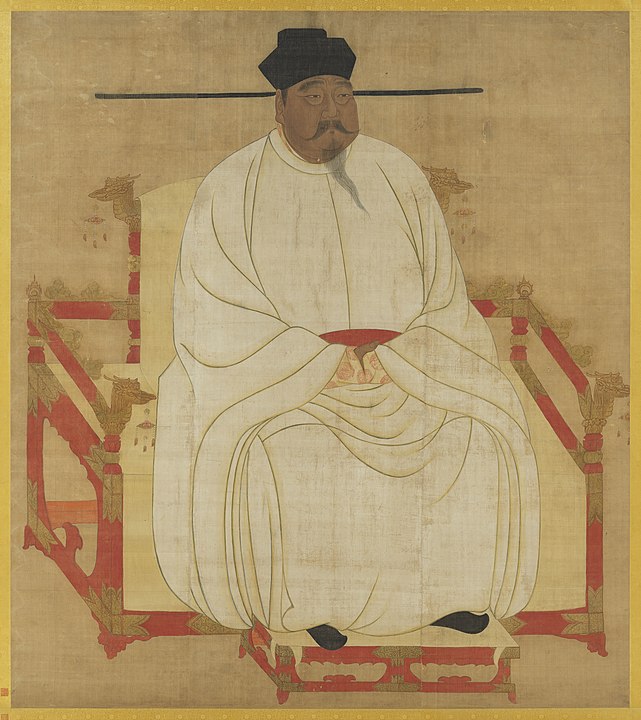
The Song dynasty capital was established in northeastern China, in Kaifeng. From Emperor Taizu onwards, administrative reforms were launched. Major cartography projects and work on communication routes were undertaken. Precise maps of each major city and province were drawn: these were the first atlases. However, the main reform was establishing a generalized examination system for recruiting imperial officials. This resulted in drastically reducing the proportion of officials recruited based on their birth, transforming the imperial administration into a near-meritocratic system. By improving the recruitment of officials, the Empire equipped itself with a truly effective administration. This policy continued throughout the dynasty.
The idea behind this examination system was to promote social mobility and equality among competitors. The success was ultimately rather mixed. While the administrative examination did indeed select the most capable, these were often from the scholarly elite, as they had access to much better education than the average Empire citizen.
However, while the administration underwent profound reforms, the legal system remained virtually identical to that used by the Tang dynasty, based on principles from Confucian philosophy. The judge alone decided the guilt of an accused and the appropriate punishment. The position of magistrate was considered an honor, and the judge himself was supposed to be an example for his contemporaries.
In terms of foreign policy, the Song dynasty represented the first central power in China in more than half a century, and consequently had to reestablish diplomatic relations with its neighbors. Song emperors’ envoys recreated diplomatic relations with India, Central Asian khans, Indonesian kingdoms, and as far as Egypt. While China’s relations with the rest of the world were generally peaceful and centered on trade, relations with its direct neighbors were permanently on the brink of war. On the northern frontier, the Liao and Xia dynasties occupied part of the territory considered integral to China.
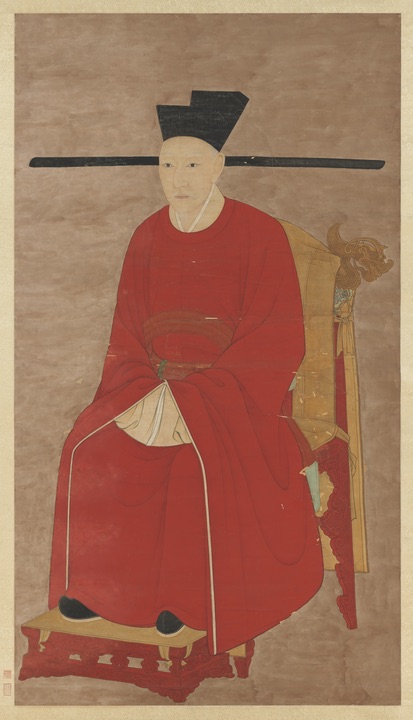
Although the Song had undertaken important reforms, their military power was reduced, and Liao troops could ravage northern China with impunity until 1005 after repelling an attempted conquest.
In the early 11th century, Song armies nearly managed to conquer Xia territories, but internal divisions in the Song high command ultimately cost them this campaign. Between 1075 and 1077, the Song went to war with their southern neighbors, the Ly, who governed present-day Vietnam, over a border dispute. This war was particularly bloody, and above all useless since it ended with a return to the status quo that prevailed before the start of hostilities.
The Song, who had accomplished the feat of reunifying China and taking control while beginning to reform a society unchanged since the Tang era, were nevertheless unable to effectively defend their borders.
Thus, when the Jurchens, a minority within the Liao kingdom, rebelled to form the Jin dynasty, the Song provided them significant military support to finally rid themselves of their troublesome northern neighbor in 1125. The Jurchens, however, noticed the weaknesses of the Song armies and seized the opportunity to expand their territory, launching two successive campaigns against the Song in 1125 and 1127, the second leading to the “Jingkang Humiliation,” where the Jurchens captured the emperor, his heir, and the majority of the imperial court. The self-proclaimed Emperor Gaozong led the remains of the Song dynasty south of the Yangtze and established the Southern Song dynasty in Lin’an (Hangzhou).
The Southern Song
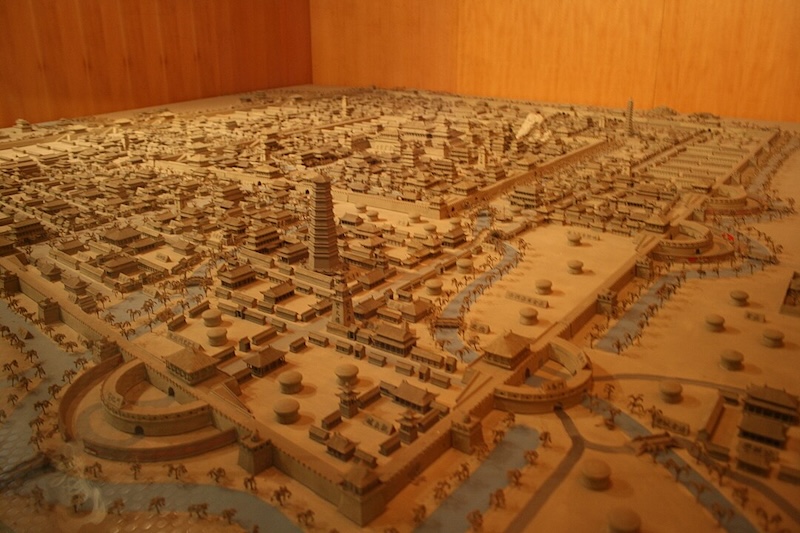
Having lost control of northern China and militarily broken, the Song had to find new ways to support their economy and defend against constant Jin attacks on their northern border.
And, for the first time in Chinese history, the Song Emperors sought a solution outside their borders. Barely five years after the Jingkang humiliation, the first imperial navy was created. Deep-water ports, lighthouses, warehouses, and shipyards… all were created with a speed only a centralized power was capable of. The imperial navy supported and protected trade routes with Japan and Korea, Southeast Asian kingdoms, India, and the Arabian Peninsula. Military innovations, such as the use of gunpowder and the first paddle wheel ships, allowed the Song to defeat the Jin navy, even when fighting 1 against 20, at the battles of Canshi and Tangdao in 1161. The imperial navy then had 3,000 men.
Fifty years later, it had some 50,000.
Furthermore, to fund the Empire’s defense, the Song confiscated some of the elite’s lands. This movement caused a radical increase in tax evasion, with landowner families using their administrative connections to avoid paying their taxes. The situation at the end of the 11th century was completely new. Gradually, one could distinguish a number of large landowner families who had also placed some of their sons in the administration. These families formed a new elite.
Moreover, the examination system created during the Northern Song was restricted to a certain number of dignitaries. As a result, given the explosive population growth, the number of imperial administration officials was no longer sufficient. In the end, the State became less and less involved in local affairs. For example, more and more schools were funded by private funds – funds coming from the landowner families mentioned above, strengthening their influence.
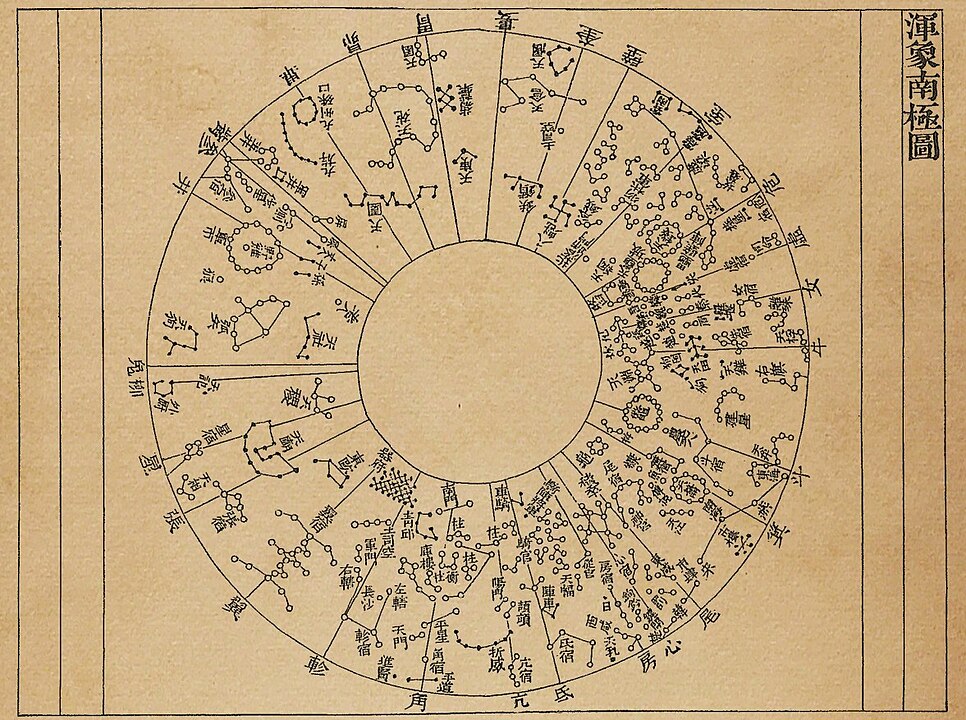
By the end of the 12th century, a certain balance had been reached. Relations with the Jin were more or less stabilized, and the Empire’s internal affairs remained under control. In the early years of the 13th century, the end of the Song dynasty would appear. Between 1205 and 1209, the Song’s main adversaries, the Jin, fell victim to raids by Mongol armies led by Genghis Khan. In 1211, they were definitively crushed and subjected to the Khan, forced to pay tribute. When they moved their capital from Beijing to Kaifeng, the Mongols saw it as rebellion, and the Jin were wiped off the map.
Meanwhile, the Mongols subdued the Western Xia and Korea. Some Mongol forces conducted sporadic raids on the southern bank of the Yangtze starting in 1259, but in 1265, a decisive victory in Sichuan gave the advantage to the Mongols. After the capture of Xiangyang and the defeat of 130,000 Chinese soldiers in 1275, the Mongols encountered no further obstacles in their conquest. The Yuan dynasty, founded in 1271 by Kublai Khan, finally overcame the last Song resistance at the Battle of the Pearl River (in southern China) in 1279. Most members of the imperial family committed suicide, and the Mongols became the new masters of the Middle Kingdom.
Arts and Culture in Song China
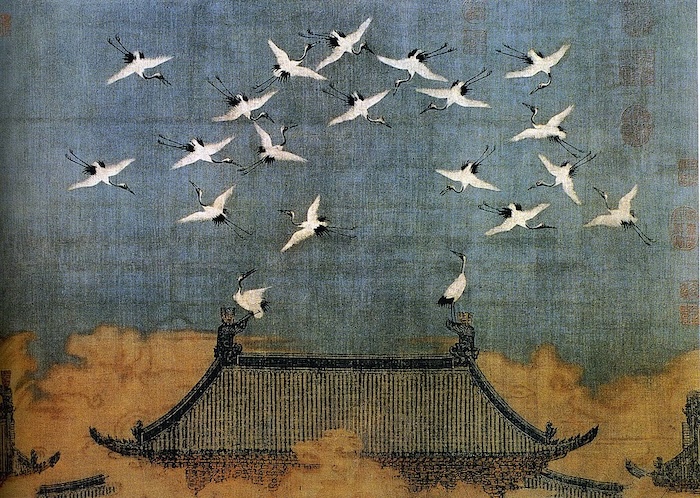
The Song dynasty marks a true revolution in the artistic domain. Painting, Literature, Ceramics, Opera… in all areas, new methods and practices transformed the Chinese artistic landscape.
Painting, first and foremost, saw the emergence of the Shanshui style (literally: mountains and rivers), and the proliferation of landscape paintings. The influence of Taoism, according to which man is but a tiny part of a much vaster universe, probably partly explains this enthusiasm for landscapes. The same type of representations can be found decorating lacquered wooden objects from this period, as well as on bronze and jade engravings, sculptures, and even frescoes and bas-reliefs. The most classic scene depicted, with some variations, high mountains lost in fog in the background, and rivers and waterfalls flowing to the foreground.
From the Northern Song dynasty to the Southern Song dynasty, representations changed, focusing increasingly on details, such as a bird on a branch, for example… Several great artists were admitted to the imperial court, the most famous among them being Zhang Zhuedang (1085-1145), who painted the scroll titled Along the River During the Qingming Festival.
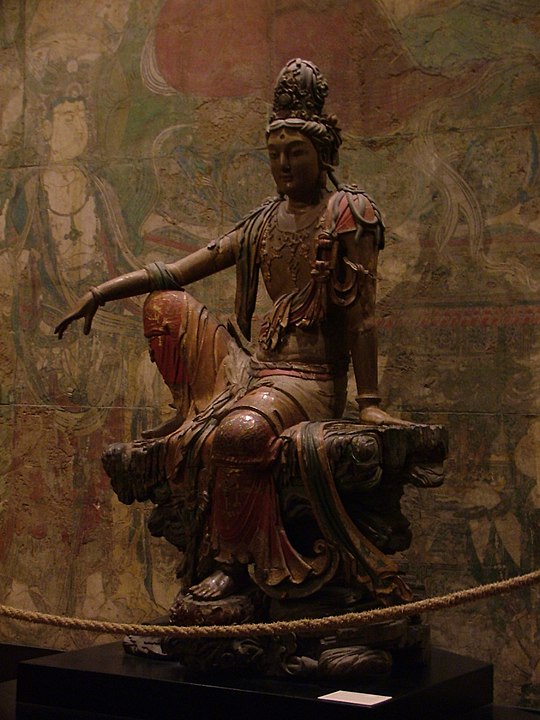
In terms of literature, the Song dynasty saw the birth of works by famous poets such as Su Shi (1037-1101), Mi Fu (1051-1107), and the first Chinese female poet, Li Qingzhao (1084-1151). The most popular form of Song poetry was the ci form, developed under the Tang. Besides the popularity of poetic art, Song literature also includes impressive works on history, such as the universal history Zizhi Tongjian, completed in 1184, containing more than 3 million characters in 294 volumes. The “New Book of Tang” (1060) and the “Four Books of Song” (throughout the 10th century) were also important works.
Finally, numerous scientific writings emerged under the Song, whose control over China relied partly on technological advancement, including Shen Kuo’s “Essays from the Dream Pool,” a work covering many fields, from art to military strategy, anthropology, and archaeology. Among these were numerous works on agronomy, notably the “Cha Lu” on tea cultivation, and the “Zhu Zi Cang Fa” on seed management.
Countless atlases and geographical works were also produced, ordered by successive emperors who saw them as a means to better defend their kingdom.
Theater under the Song had an ambiguous status. It was under the Northern Song, in Kaifeng, that theater became an industry in China for the first time. Four of the theaters established in the capital could accommodate several thousand people. The troupes performing in the streets and markets were too numerous to count, and more than fifty permanent theaters were established in the city’s pleasure district. The plays were always recited in classical Chinese and accompanied by music, sometimes by full orchestras. But at the same time, although almost as educated as members of the imperial administration, actors were still considered inferior members of society, having a status close to that of prostitutes. However, this did not affect the popularity of theater troupes. Some were so successful that it was said their members could become rich in a single evening.
Religion and Philosophy
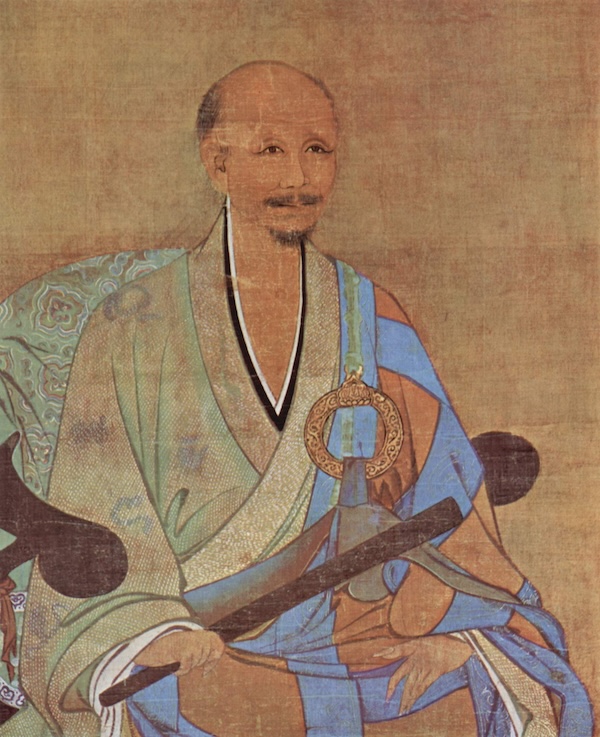
The Song dynasty marks a major change in the history of Chinese philosophies, a change that would impact all of Asia. At the beginning of the dynasty, Buddhism was declining, as it was considered a “foreign” religion, and especially as being very abstract, in contrast to Confucian classics and Taoism, which addressed practical problems like administration or family life, and were “native” philosophies, born from Chinese thinkers.
Confucianism, or rather, Neo-Confucianism was being born. Confucius’s texts had become essential again for the intellectual elite in seeking solutions to govern the Empire, and these intellectuals, like Ouyang Xiu (1007-1072), did not hesitate to associate Buddhism’s implantation with China’s decline (he called Buddhism a “curse”). Led by Cheng Yi (1033-1107) and Zhu Xi (1130-1200), Neo-Confucianism aimed to purify Confucianism of its mystical aspects, moving it away from religion and closer to political philosophy.
The movement’s success was meteoric; Zhu Xi’s commentary on Confucius’s Four Books, rejected during his lifetime, became in 1241 one of the mandatory classics for entering the imperial administration. In the following decades, Korea and Japan also adopted neo-Confucian principles, both in education and administration.
However, Buddhism was not dead. Zen Buddhism also developed under the Song, with monk Wuzhun Shifan even being called to Emperor Lizong’s court to share details of Chan (Zen) doctrine.
Technology and Inventions under the Song Dynasty
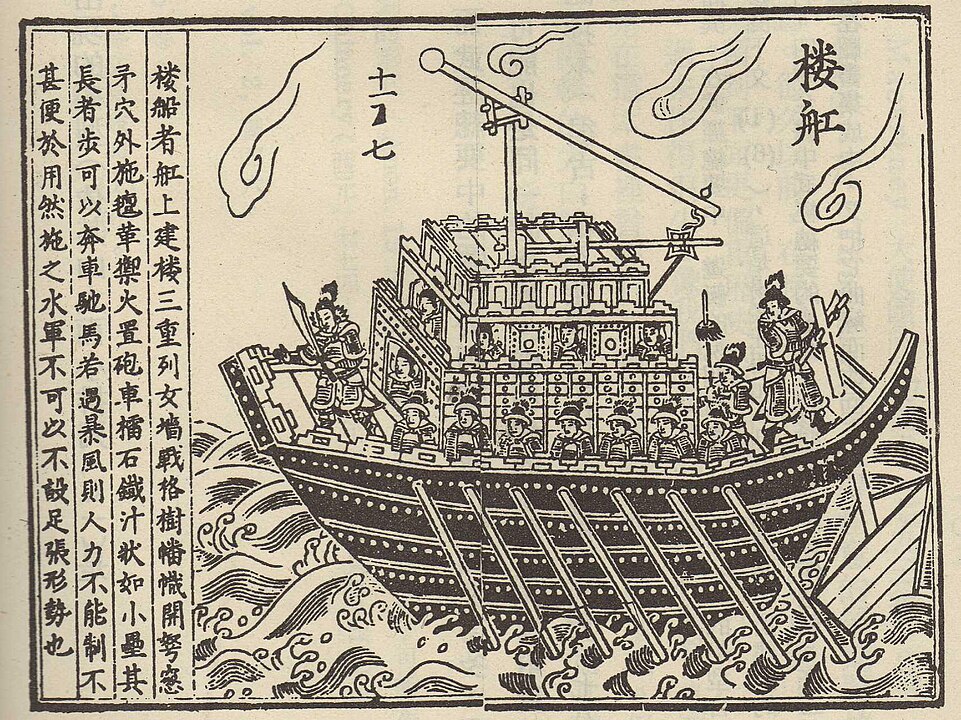
The Song dynasty was a true revolution, mainly thanks to inventions and discoveries that completely revolutionized the era, both in military and civilian matters. First major invention: gunpowder. Or to be exact, the development of many weapons using powder, including flamethrowers, mines, grenades, and cannons. These inventions allowed the Song to repel multiple invasion attempts for over three centuries. The Wujing Zongyao treatise was the world’s first to detail the manufacture and uses of gunpowder.
In civilian matters, the discoveries and inventions are countless. Shen Kuo was the first to develop a compass indicating North, thus facilitating cartography and navigation. Furthermore, he also established a theory about climate changes over time, establishing the hypothesis of “cold” and “warm” eras. His creations were not limited to this, including among others the manufacture of water clocks, an astrological telescope allowing him to locate the North Star. In terms of mathematics, the Song dynasty saw the introduction of zero in Chinese mathematics, opening the door to algebra. Geometers of the time were mainly employed by emperors to develop a more efficient mapping system, which took the form of the first Chinese maps with precise scale (1:900,000).
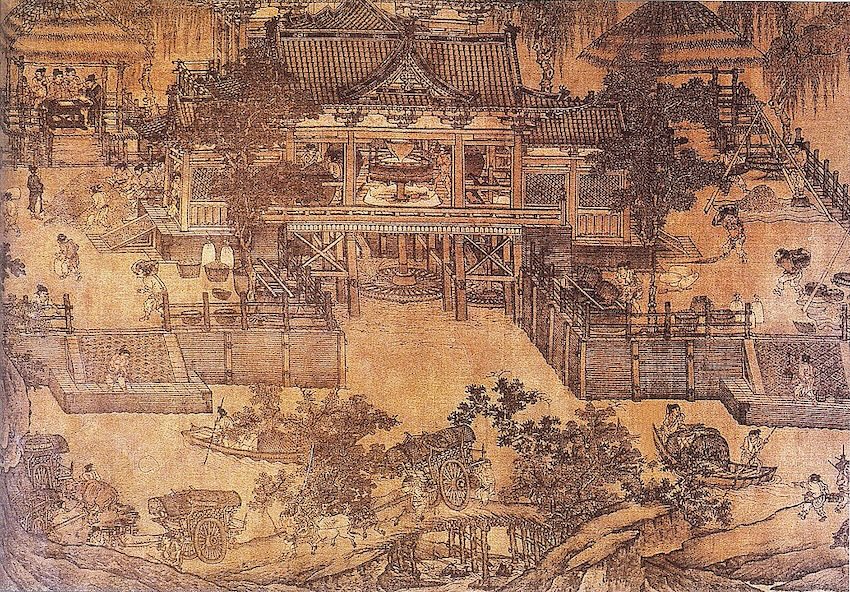
Another Song dynasty invention, the movable type press, corresponds roughly to the press invented, or rather reinvented by Gutenberg. This invention dates to the 10th century in China and played a major role in the dissemination of classical texts, and, coinciding with new administrative recruitment methods, significantly increased social mobility. The press continued to be improved throughout subsequent dynasties. Finally, besides the compass invented by Shen Kuo, a lock system was developed during this dynasty, allowing ships to be brought into dry dock for repair. These two inventions gave considerable advantage to the Chinese navy.
The invention of the compass, gunpowder, and printing are often considered the three elements that led to the end of the Middle Ages in Europe and opened the door to the Renaissance, but it was in China that these inventions were first created. The Song dynasty was a true renewal in Chinese history, both socially and technologically.
It was also the last truly Chinese dynasty before the Ming came to power. But ultimately, the aftermath of the Tang dynasty’s fall also led to the loss of the Song, who, to prevent the army from becoming a threat to imperial power, chose to keep it tightly controlled, to the point that the Song army failed to prevent conquest by the Mongols.
However, the revolutions of the Song dynasty would leave a legacy that the Ming dynasty would use to overthrow Mongol rule and regain power for three new centuries.
Q/A on the Song Dynasty
Who founded the Song Dynasty?
The dynasty was founded by Emperor Taizu (Zhao Kuangyin), a military general who seized power in 960 CE and established the Song Dynasty, ending the chaotic Five Dynasties and Ten Kingdoms period.
What were the key achievements of the Song Dynasty?
Technological innovations: Gunpowder, movable type printing, and the compass.
Economic growth: Development of paper money, urbanization, and a market economy.
Cultural flourishing: Advancements in poetry, painting, and Neo-Confucianism.
Governance: Expansion of the civil service examination system.
What caused the division into Northern and Southern Song?
The Northern Song (960–1127) ruled over most of China but fell to the Jurchen-led Jin Dynasty in 1127. The Song court fled south, establishing the Southern Song (1127–1279) with its capital at Hangzhou.
What technological innovations emerged during the Song Dynasty?
Gunpowder: Initially used for fireworks, later for military purposes.
Movable type printing: Invented by Bi Sheng, revolutionizing book production.
Compass: Improved navigation and maritime trade.
Agricultural tools: Enhanced farming productivity.


